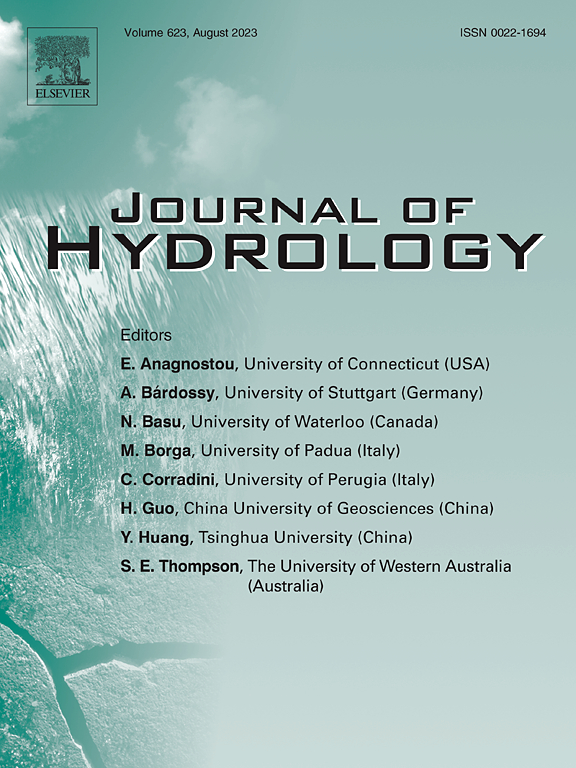将污染源转化为资产:探索废弃露天矿在雨水储存和含水层补给中的创新应用
IF 5.9
1区 地球科学
Q1 ENGINEERING, CIVIL
引用次数: 0
摘要
这篇综述文章探讨了将废弃的露天矿重新用于雨水储存和含水层补给的潜力,将它们从环境负债转变为有价值的资产。随着水资源短缺和环境挑战的加剧,创新的解决方案至关重要。常被视为环境负担的废弃矿山为可持续的水管理提供了独特的机会。该论文引用了227篇同行评议的文章,这些文章来自Clarivate的Web of Science、PubMed、ScienceDirect、b谷歌Scholar、SpringerLink和Scopus等网站,强调了利用这些站点进行雨水储存和含水层补给的可行性和效益。通过案例研究和技术进步,本文强调了利用这些站点的可行性和好处。此外,本报告还探讨了这些倡议的经济、环境和社会影响,强调尽管存在污染风险和监管障碍,但废弃矿山如何提供了理想的水收集和补给表面积。最大的露天矿山的地表面积相差很大,从美国内华达州的Betze-Post金矿的3.3 平方公里到智利圣地亚哥附近的Chuquicamata铜矿的12.9 平方公里。重新利用这些场地可以提供环境修复、水安全、经济增长和气候适应方面的好处。然而,挑战依然存在,包括技术复杂性、财政限制、监管障碍和社会接受度。有效补救、可持续发展和利益相关者参与等创新战略是克服这些障碍的关键。未来的研究应侧重于新兴技术、政策建议和适应性管理,以充分发挥将废弃矿山重新用于水管理的潜力。本文章由计算机程序翻译,如有差异,请以英文原文为准。
Transforming pollution sources into assets: Exploring innovative applications of abandoned open pit mines for rainwater storage and aquifer recharge
This review paper examines the potential of repurposing abandoned open pit mines for rainwater storage and aquifer recharge, transforming them from environmental liabilities into valuable assets. With increasing water scarcity and environmental challenges, innovative solutions are essential. Abandoned mines, often seen as environmental liabilities, present a unique opportunity for sustainable water management. Drawing on 227 peer-reviewed articles from sources such as Clarivate’s Web of Science, PubMed, ScienceDirect, Google Scholar, SpringerLink, and Scopus, the paper highlights the feasibility and benefits of utilizing these sites for rainwater storage and aquifer recharge. By examining case studies and technological advancements, this paper highlights the feasibility and benefits of utilizing these sites. Moreover, the review explores the economic, environmental, and social implications of such initiatives, emphasizing how abandoned mines, despite their contamination risks and regulatory hurdles, offer large surface areas ideal for water collection and recharge. The surface areas of the largest open pit mines vary widely from 3.3 km2 at the Betze-Post Gold Mine in Nevada, USA, to 12.9 km2 at the Chuquicamata Copper Mine near Santiago, Chile. Repurposing these sites provides environmental remediation, water security, economic growth, and climate adaptation benefits. However, challenges remain, including technical complexity, financial constraints, regulatory barriers, and social acceptance. Innovative strategies such as effective remediation, sustainable development, and stakeholder engagement are key to overcoming these obstacles. Future research should focus on emerging technologies, policy recommendations, and adaptive management to unlock the full potential of repurposing abandoned mines for water management.
求助全文
通过发布文献求助,成功后即可免费获取论文全文。
去求助
来源期刊

Journal of Hydrology
地学-地球科学综合
CiteScore
11.00
自引率
12.50%
发文量
1309
审稿时长
7.5 months
期刊介绍:
The Journal of Hydrology publishes original research papers and comprehensive reviews in all the subfields of the hydrological sciences including water based management and policy issues that impact on economics and society. These comprise, but are not limited to the physical, chemical, biogeochemical, stochastic and systems aspects of surface and groundwater hydrology, hydrometeorology and hydrogeology. Relevant topics incorporating the insights and methodologies of disciplines such as climatology, water resource systems, hydraulics, agrohydrology, geomorphology, soil science, instrumentation and remote sensing, civil and environmental engineering are included. Social science perspectives on hydrological problems such as resource and ecological economics, environmental sociology, psychology and behavioural science, management and policy analysis are also invited. Multi-and interdisciplinary analyses of hydrological problems are within scope. The science published in the Journal of Hydrology is relevant to catchment scales rather than exclusively to a local scale or site.
 求助内容:
求助内容: 应助结果提醒方式:
应助结果提醒方式:


